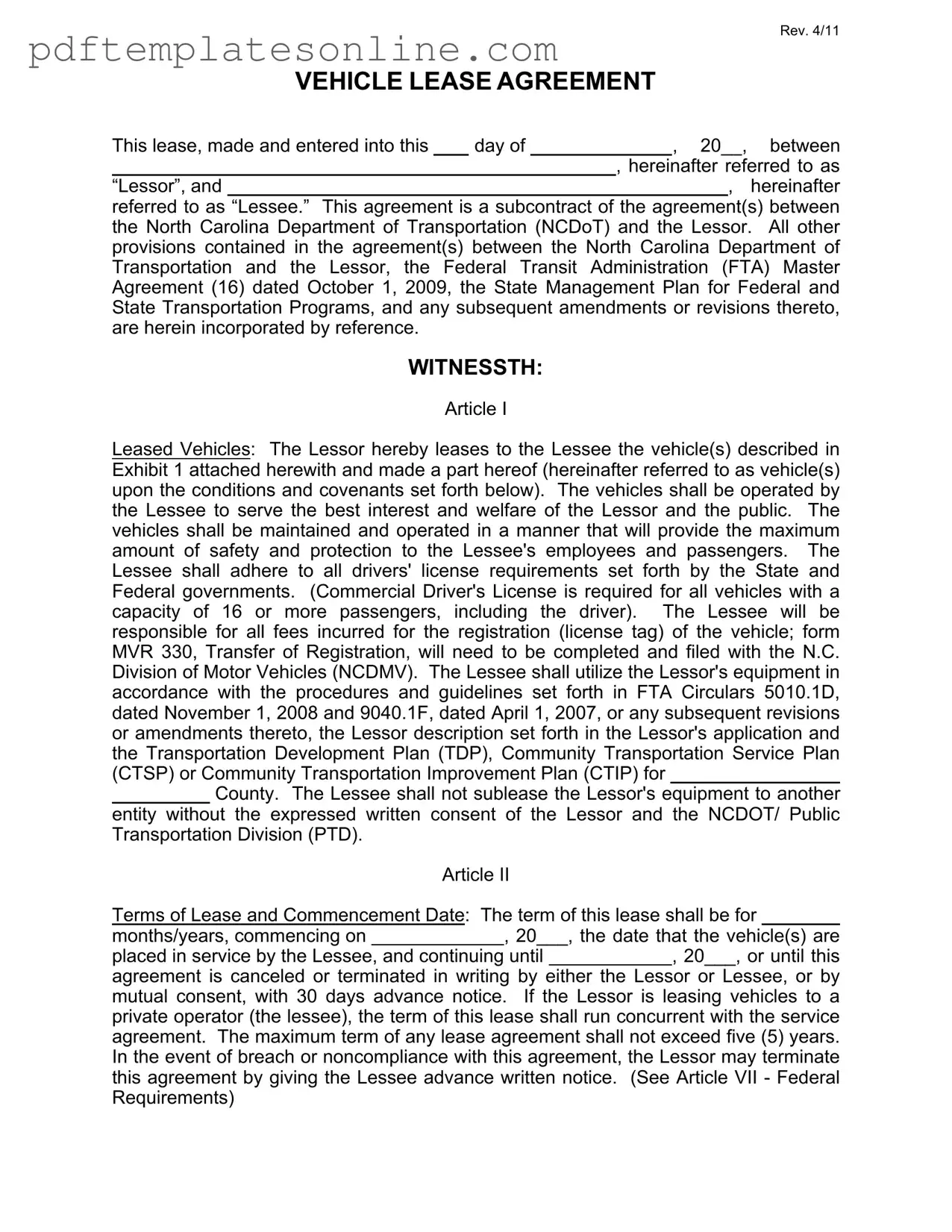When filling out a Commercial Vehicle Lease Agreement form, individuals often make several common mistakes that can lead to complications later on. One frequent error is failing to provide complete and accurate information in the designated fields. For instance, omitting the date, names of the parties involved, or specific vehicle details can create confusion and may delay the leasing process. It's essential to double-check that all necessary fields are filled out correctly before submission.
Another mistake is neglecting to read the terms and conditions thoroughly. Many people may skim through the document without fully understanding the obligations and responsibilities outlined within it. This can lead to misunderstandings regarding maintenance responsibilities, insurance requirements, or the consequences of noncompliance. Taking the time to read and comprehend the entire agreement is crucial to avoid unexpected liabilities.
Inadequate attention to insurance requirements is also a common pitfall. Lessees must ensure that they have the appropriate coverage in place, as specified in the agreement. Failing to provide proof of adequate insurance or not maintaining continuous coverage can be considered a breach of the lease. It is important to confirm that the insurance policy meets all state and federal requirements before finalizing the agreement.
Another mistake occurs when individuals overlook the importance of documenting maintenance activities. The lease agreement typically requires the Lessee to maintain a Preventive Maintenance Record. Neglecting to keep this documentation can result in disputes over vehicle condition or maintenance history. Keeping detailed records not only fulfills contractual obligations but also protects the Lessee in case of any future claims.
Some individuals may also forget to obtain the necessary training for vehicle operators. The lease agreement often stipulates that operators must be properly trained, especially when using specialized equipment. Without this training, there may be increased risks of accidents or damage, leading to potential liability issues. Ensuring that all operators receive the required training is a critical step in the leasing process.
Lastly, failing to comply with federal and state requirements can lead to significant consequences. The lease agreement often includes various legal obligations that the Lessee must adhere to throughout the term. Ignoring these requirements can result in penalties or even termination of the lease. It is vital to stay informed about any changes in regulations and ensure compliance to avoid complications.
